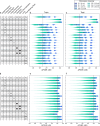Robust self-supervised denoising of voltage imaging data using CellMincer
- PMID: 39649342
- PMCID: PMC11618097
- DOI: 10.1038/s44303-024-00055-x
Robust self-supervised denoising of voltage imaging data using CellMincer
Abstract
Voltage imaging is a powerful technique for studying neuronal activity, but its effectiveness is often constrained by low signal-to-noise ratios (SNR). Traditional denoising methods, such as matrix factorization, impose rigid assumptions about noise and signal structures, while existing deep learning approaches fail to fully capture the rapid dynamics and complex dependencies inherent in voltage imaging data. Here, we introduce CellMincer, a novel self-supervised deep learning method specifically developed for denoising voltage imaging datasets. CellMincer operates by masking and predicting sparse pixel sets across short temporal windows and conditions the denoiser on precomputed spatiotemporal auto-correlations to effectively model long-range dependencies without large temporal contexts. We developed and utilized a physics-based simulation framework to generate realistic synthetic datasets, enabling rigorous hyperparameter optimization and ablation studies. This approach highlighted the critical role of conditioning on spatiotemporal auto-correlations, resulting in an additional 3-fold SNR gain. Comprehensive benchmarking on both simulated and real datasets, including those validated with patch-clamp electrophysiology (EP), demonstrates CellMincer's state-of-the-art performance, with substantial noise reduction across the frequency spectrum, enhanced subthreshold event detection, and high-fidelity recovery of EP signals. CellMincer consistently outperforms existing methods in SNR gain (0.5-2.9 dB) and reduces SNR variability by 17-55%. Incorporating CellMincer into standard workflows significantly improves neuronal segmentation, peak detection, and functional phenotype identification, consistently surpassing current methods in both SNR gain and consistency.
Keywords: Cellular imaging; Fluorescence imaging; Image processing.
© The Author(s) 2024.
Conflict of interest statement
Competing interestsAuthor M.B. is a consultant and a scientific advisory board member of Hepta Bio. The other authors declare no competing interests.
Figures








Update of
-
Robust self-supervised denoising of voltage imaging data using CellMincer.bioRxiv [Preprint]. 2024 Apr 15:2024.04.12.589298. doi: 10.1101/2024.04.12.589298. bioRxiv. 2024. Update in: Npj Imaging. 2024;2(1):51. doi: 10.1038/s44303-024-00055-x. PMID: 38659950 Free PMC article. Updated. Preprint.
References
Grants and funding
LinkOut - more resources
Full Text Sources
Miscellaneous
